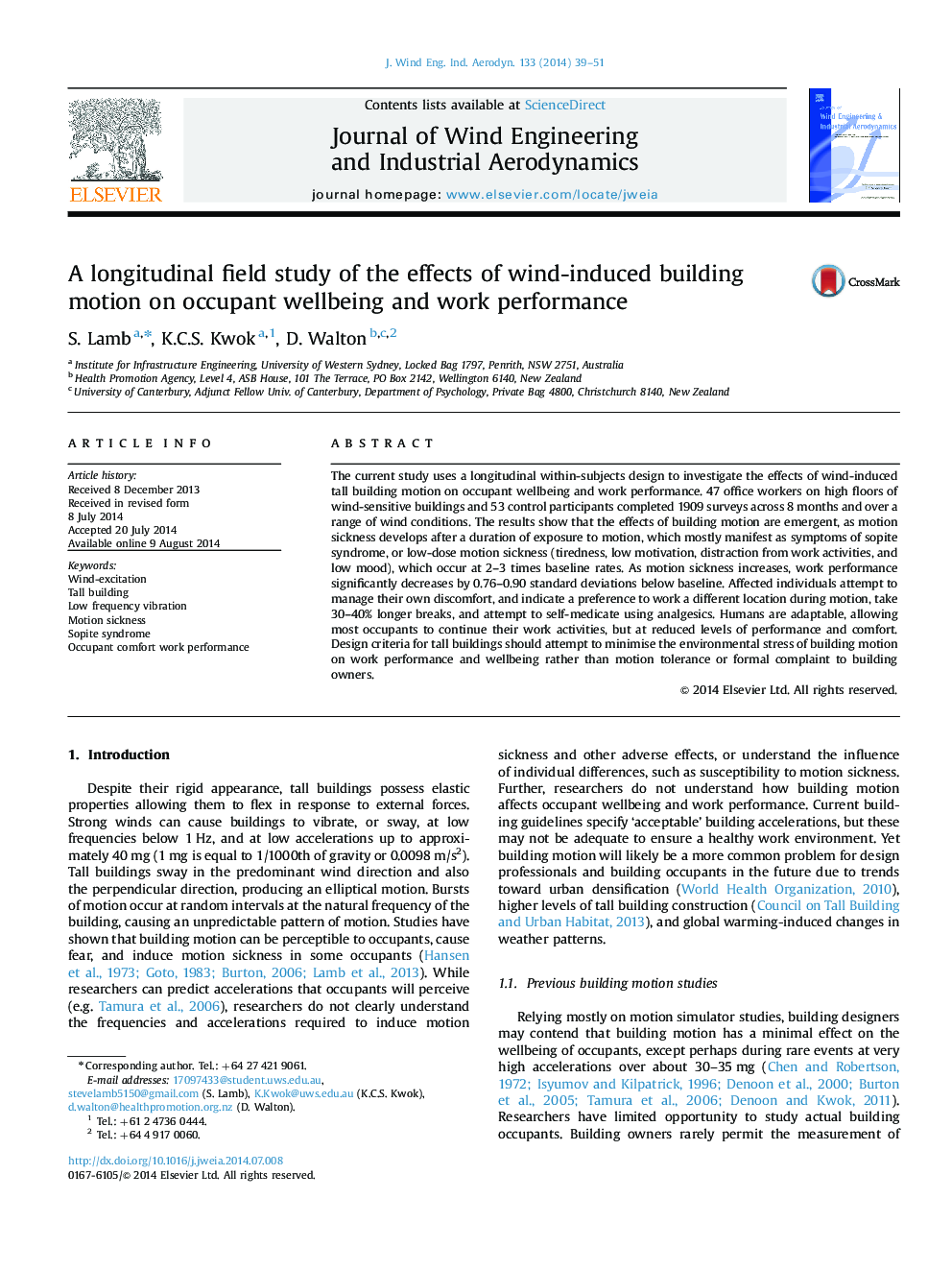| Article ID | Journal | Published Year | Pages | File Type |
|---|---|---|---|---|
| 293459 | Journal of Wind Engineering and Industrial Aerodynamics | 2014 | 13 Pages |
•Wind-induced building motion mostly induces low-dose motion sickness.•Motion sickness causes a large reduction in work performance.•Affected individuals take 30–40% longer breaks and attempt to self-medicate.•Design criteria should address wellbeing rather than tolerance or complaint.
The current study uses a longitudinal within-subjects design to investigate the effects of wind-induced tall building motion on occupant wellbeing and work performance. 47 office workers on high floors of wind-sensitive buildings and 53 control participants completed 1909 surveys across 8 months and over a range of wind conditions. The results show that the effects of building motion are emergent, as motion sickness develops after a duration of exposure to motion, which mostly manifest as symptoms of sopite syndrome, or low-dose motion sickness (tiredness, low motivation, distraction from work activities, and low mood), which occur at 2–3 times baseline rates. As motion sickness increases, work performance significantly decreases by 0.76–0.90 standard deviations below baseline. Affected individuals attempt to manage their own discomfort, and indicate a preference to work a different location during motion, take 30–40% longer breaks, and attempt to self-medicate using analgesics. Humans are adaptable, allowing most occupants to continue their work activities, but at reduced levels of performance and comfort. Design criteria for tall buildings should attempt to minimise the environmental stress of building motion on work performance and wellbeing rather than motion tolerance or formal complaint to building owners.
